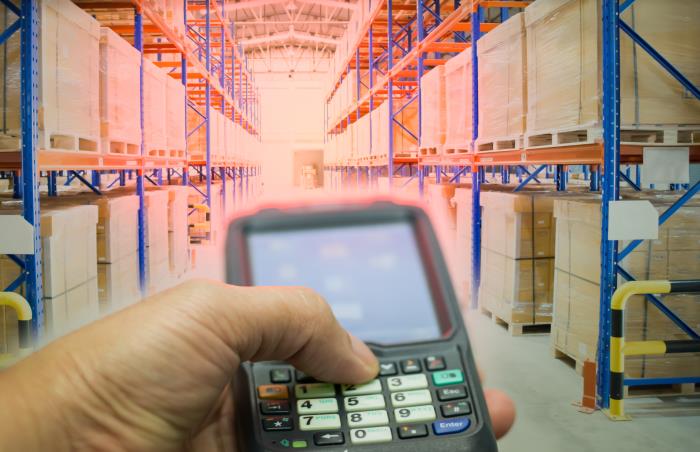Warehouse Management

Warehouse Management
- Barcode scanning support for inventory barcodes including barcodes for serial numbers or batch numbers.
- Inventory Location Transfers.
- Stock Counts.
- Quality Control Checklists.
- Purchase Receipts.
- Production Issues and Receipts.
- Job Issues.
- Sales Order and Job Picking for Deliveries.
- Deliveries for Sales Orders and Jobs with drop off information and proof of delivery.
- User defined Containers such as pallets, drums, boxes, spacecraft etc.
- Containers can be transferred and stored into other containers, eg drums on a pallet.
- Transfer or receipt inventory into a container and scan the whole container using one barcode.
- Pick and Transfer orders to a specific location, eg
- Reserving stock for an order
- Picking and transferring the raw materials and ingredients for a production order to a manufacturing work station or staging location before issueing them from inventory
- Picking and transfering inventory for a sales order to a delivery dock for packing before it is delivered.
- Picking and transfering inventory for a job to a van to be used onsite.
- Count inventory with or without barcoding, from Inventory Counts created in Ostendo.
- Control access to picking or handling certain types if items, eg dangerous goods, heavy goods etc.
- Hazards can be defined for inventory or production, such as material safety data or handling instructions. Hazards are listed first in order of Risk Level (Extreme, High, Moderate, Low). New Hazards can be added from the Ostendo Freeway app.
Business Process and Quality Control Checklists
- Business Process checklists can be used to ensure that employees follow a disciplined and consistent process.
- Pre-Start Checklists – allows for an initial checklist that must be completed prior to anything further being done eg, user signs off that they read and understood the Hazards before proceeding with the job.
- Checklists – mandatory or optional checklists and data capture. A checklist is a pre-defined list of questions or pointers to guide a user and ensure that employees follow a disciplined and consistent process.
- Conditional Checklists – can be used to help employees follow a pre-defined process to carry out tasks such as business processes, problem diagnosis, compliance certifications, quality assurance and so on. Conditional Checklists make the process dynamic. Depending on the answers to the preceding questions, the Conditional Checklist can take a variety of paths so that the relevant set of questions are asked and responded to, according to the actual situation. The checklist can finish with a 'Pass' or 'Fail' result.
Process Management
- Update user defined colour coded Tracking Codes against records to update the business process status.
- Forwarding – allows an employee to forward a partially completed Datasheet to another user, eg to a Supervisor for approval.
Data Capture
- Barcoding – that works on devices with an inbuilt barcode scanner or with external bluetooth barcode scanner to scan batch numbers or serial numbers.
- Scan On – a feature that allows the user to simply scan a barcode to initiate the creation of a Datasheet. This is especially useful if the user primarily only deals in one type of transaction.Can read all barcode types including QR Codes.
- Photos – integrates with device camera to take photos or link to existing images on the device.
- Sketches – Draw on photos to highlight points of note, or draw freeform sketches.
- Typed Notes – add internal or external notes which can update specific note fields in Ostendo Operations. View past history notes against jobs, sales orders, sales deliveries, purchase orders, manufacturing work orders, stock counts, assets, customers or suppliers.
- Audio Recording – use voice recordings instead of typing notes, or record noises for service purposes.
- Signatures – capture multiple signatures with mandatory or optional setting. Options to prevent changes to data sheets after customer signature.
- Statistical Quantities – are used to record quantities or to collect statistical data such as recording quantity complete, measuring productivity rates, capturing quality control data such as temperature readings or number of rejects, or to keep track of work performed to date. The recorded quantities can be set to update statistics of the associated Customer, Supplier, Site or Item.
- Email & Print – email and/or print details to the customer or the office.
Business Intelligence
- On-hand quantity by location
- User-defined Inquiries which can have a combination of a chart, scorecard (multiple KPIs), and a listing report style.
- The output within Freeway can be sent to a PDF file and emailed.
- A snapshot can be taken of a portion of the inquiry display and annotated with an audio note. This is much faster than typing an email.
- Scorecard KPIs or statistics can be defined, with highlighted conditional values.
- Restriction counts in the data can be defined, eg top 10 customers.
Setup and Security
- Styles - user-defined solutions using any combination of objects.
- Security – define the employees who use the Ostendo Freeway app and what they can do.
- Branding- user-defined background and button styles. Options include branding and logo in the background and user-defined buttons.
